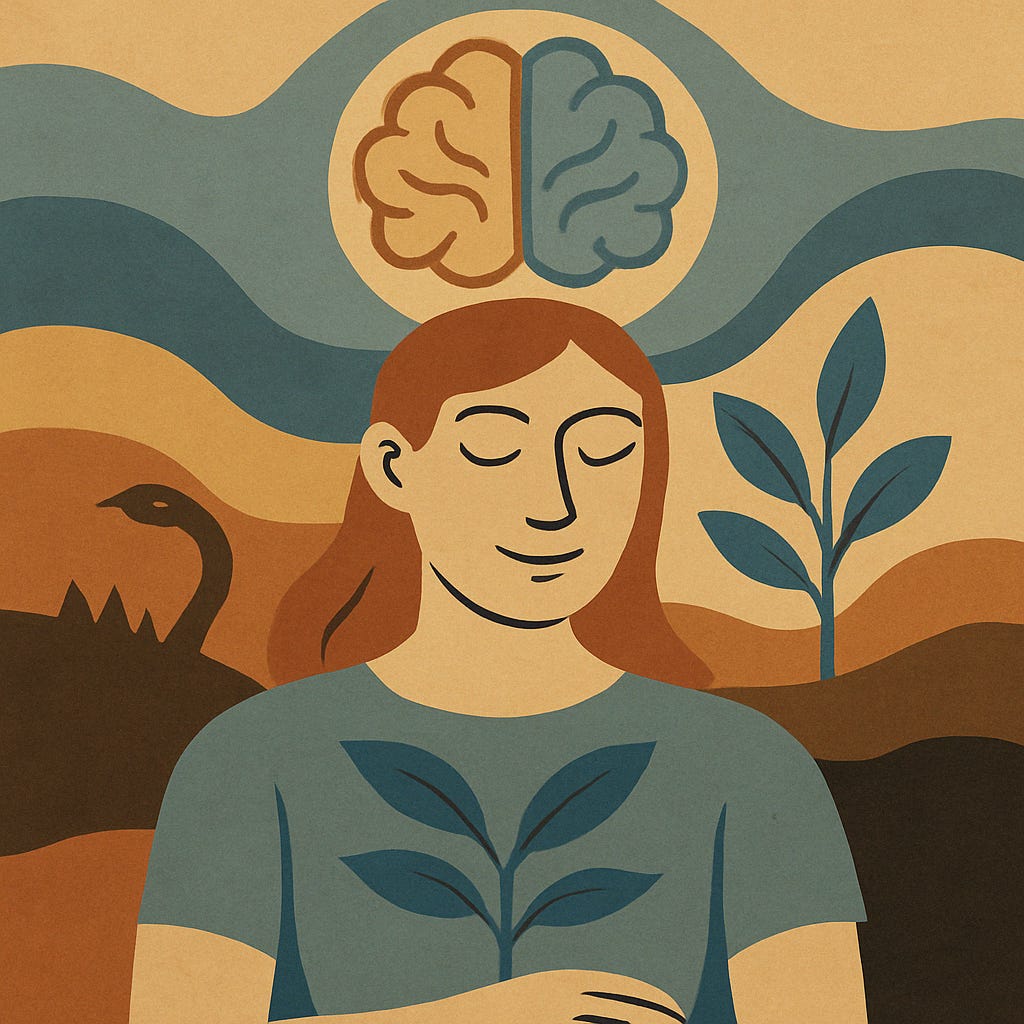The irony is, the alternative human we imagined—the calm, thoughtful, positive being—is not science fiction. That version of us already exists. It's just not always in charge. The prefrontal cortex, the most evolved part of the human brain, governs reason, emotional regulation, long-term thinking, and empathy. It gives us the ability to override reflex, to pause before reacting, to consider consequences, to choose wisely.
But it often loses the mic.
When we’re tired, stressed, overstimulated, or overwhelmed, the reactive system takes over. The calm, thoughtful self gets shoved aside by what neuroscientists call an “amygdala hijack.” Suddenly, we’re arguing like a cornered animal or spiraling through imagined disasters. The more threatened we feel, the more primitive we become.
So, on the one hand, we are anxious, emotionally sensitive creatures—primed to scan for danger, alert to judgment, and easily thrown off balance by the slightest hint of threat. On the other, we are thoughtful, reflective beings—capable of reason, empathy, restraint, and perspective.
This duality isn’t a philosophical metaphor. It’s neurological fact.
The Two Humans We Each Contain
If the anxious, reactive self is the default—born of evolution, reinforced by fear—then the calm, wise self is something we have to cultivate. But it’s there. The capacity is built in.
In fact, it’s what many of our best practices aim to strengthen. Mindfulness, deep breathing, journaling, and reflection all activate the prefrontal cortex, inviting it to reenter the conversation. It’s not about silencing the anxious voice, but about letting another voice speak, too.
You’ve likely felt both of these selves in action:
Before a job interview, the reactive self worries about being judged, imagines failure, and triggers a racing heart. But the wise self prepares carefully, reframes the anxiety as excitement, and walks in grounded.
After a disagreement, the reactive self replays every slight, feeding resentment. The wise self pauses, considers context, and maybe even picks up the phone to reconnect.
In the face of uncertainty, one self catastrophizes. The other asks: What’s actually true right now?
These aren’t different people. They’re just different states of being. And the more we learn to recognize which one is present, the more agency we gain.
Living at One End—or the Other
Here’s the question that lingers: what does it actually feel like to live closer to one end of this internal spectrum?
To live dominated by the anxious social creature is to live braced. Life feels fast, personal, high-stakes. Small things—an email, a tone of voice, a delay—carry outsized weight. There’s little rest, even in rest.
To live anchored in the calm, wise self is to feel more spacious. Not numb or indifferent—just less tossed by every wave. Reactions still arise, but they don’t define the day. There’s more curiosity than panic, more response than reflex.
Most of us swing between these poles. But the tilt matters. A life lived mostly from the reactive self tends to be narrower, more fragile. A life with more room for the prefrontal cortex—more thought, more calm—tends to feel fuller, more connected, more sustainable.
We are both. And perhaps the most human thing we can do is not to deny either side, but to practice bringing them into conversation. Let the anxious self warn, and let the wise self interpret. Let the reactive self spark urgency, and let the thoughtful self decide what matters most.
That’s not a flaw. That’s a form of integration. A quiet kind of wisdom.
And it may be the most hopeful thing about our species: that we were wired for survival, yes—but we were also given the capacity to evolve from within.
How to better navigate this? Well, that’s what my blog is all about. Pull over a virtual chair and let’s begin!
This post is part of the “Unwiring” series on Substack, exploring how our nervous system shapes modern life—and how we can shift from reactivity to choice. Catch up on the previous posts here.




